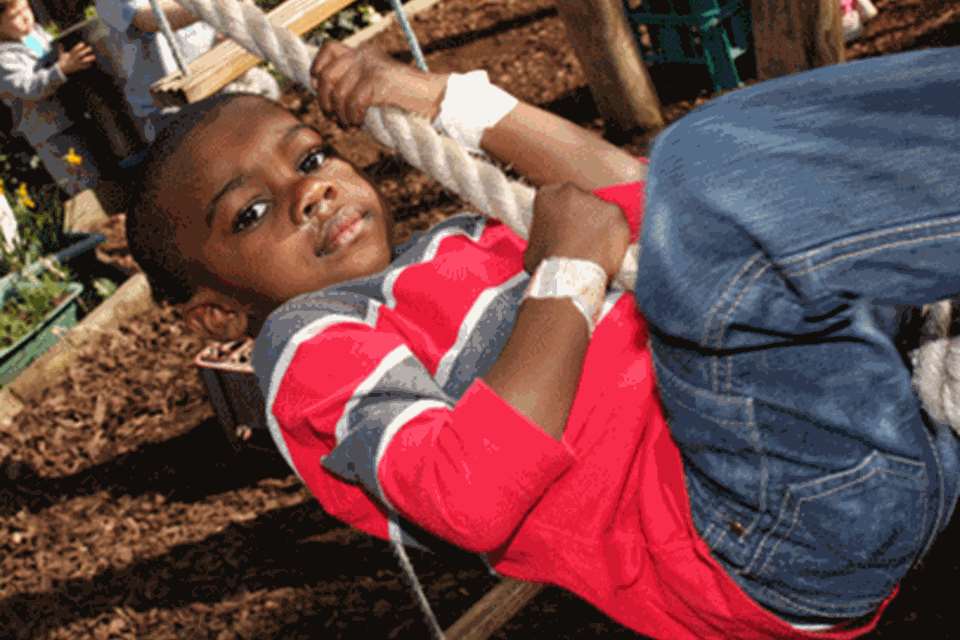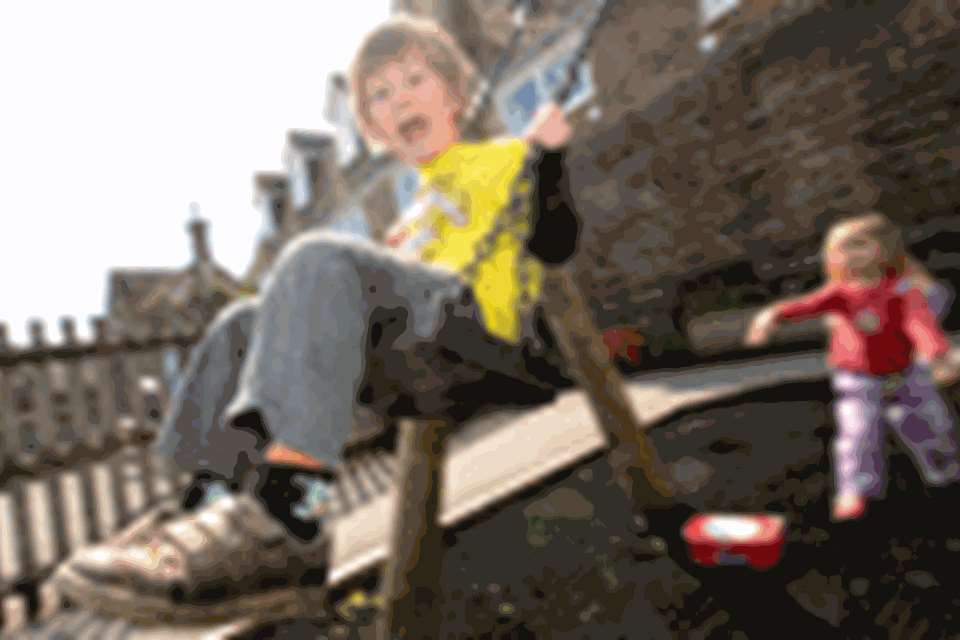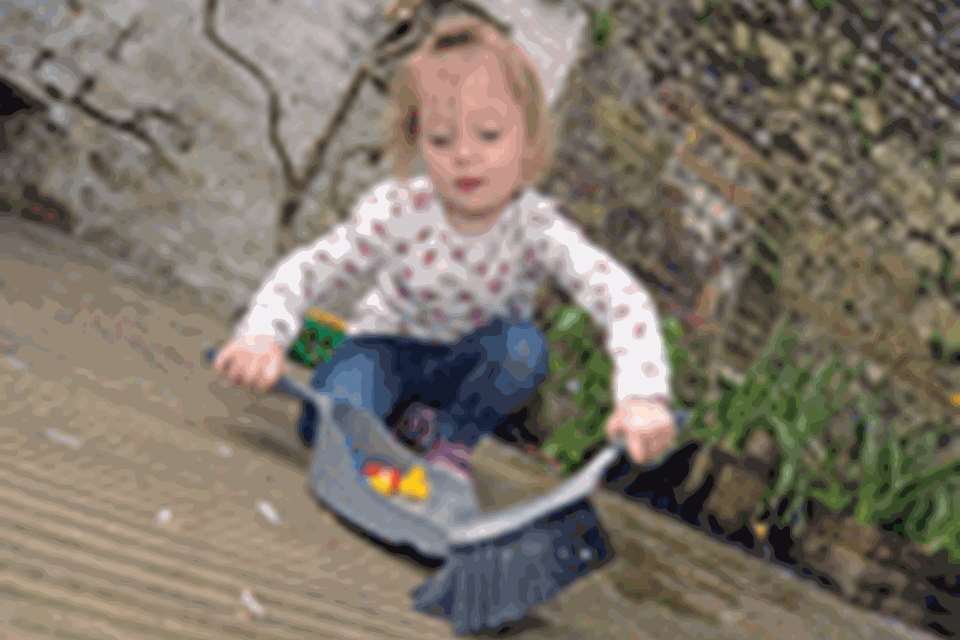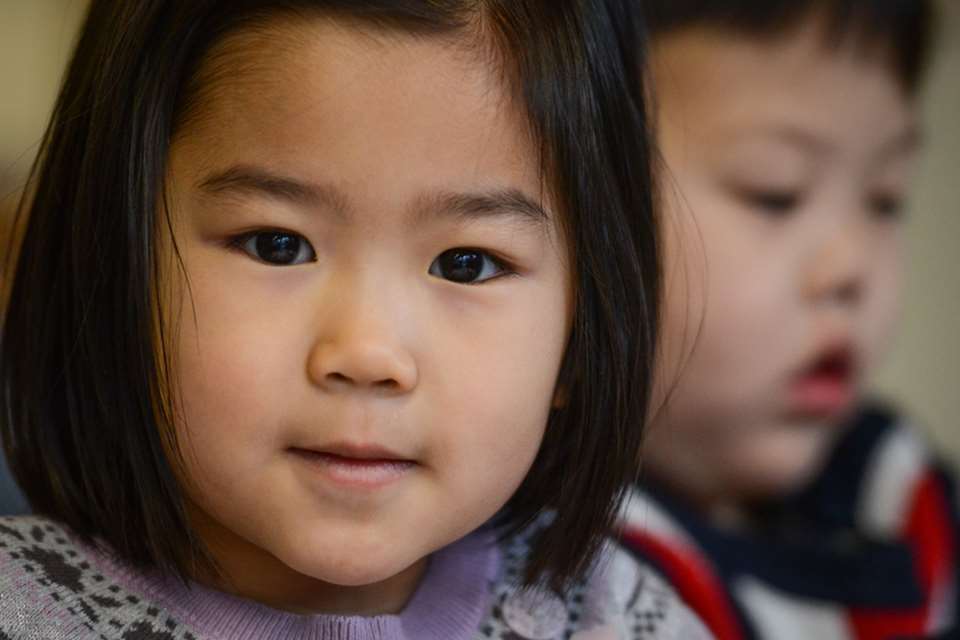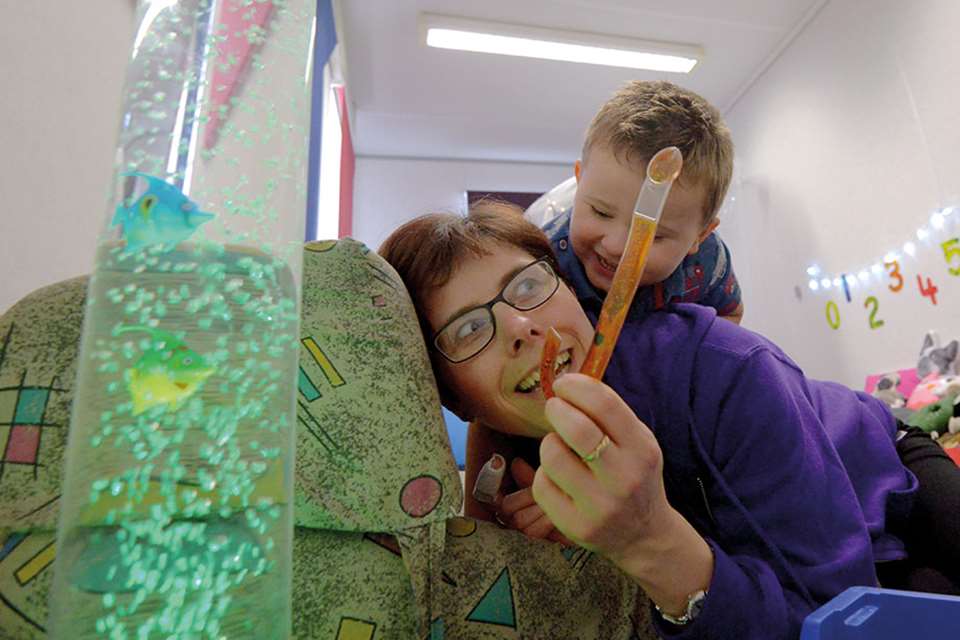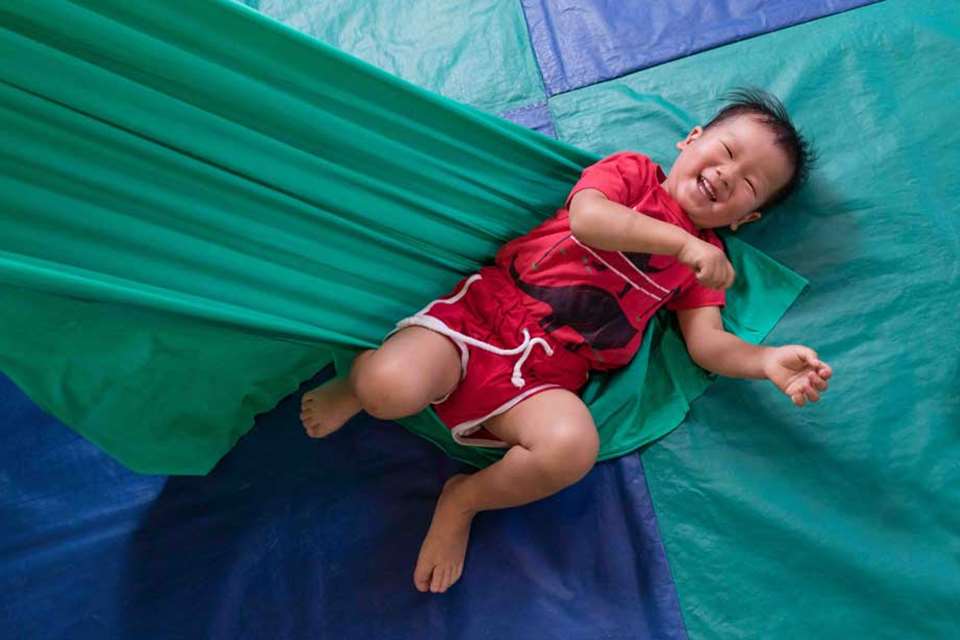Sensory Processing, Part 1 - Making sense
Anne O'Connor and Dr Kath Dickinson
Monday, January 21, 2019
Sensory experiences are vital to healthy brain development, explain Anne O’Connor and Dr Kath Dickinson in part one of a new series
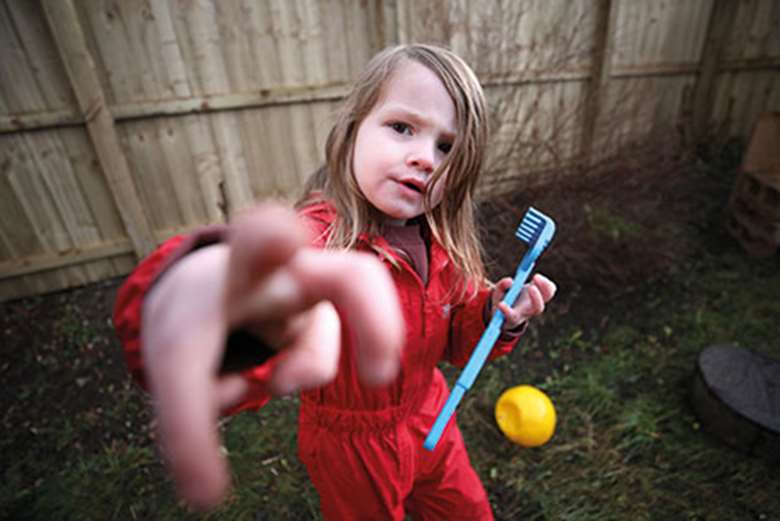
Life is one big multi-sensory experience. All the sensory information around us sends messages to our brains, which we process, mostly without even thinking about it, to help us understand and make sense of our world. This begins in babyhood, and later as we mature and develop it helps us plan and make choices about how we conduct our lives and keep ourselves safe, while also judging when to take risks and how to deal with new information.
Even before birth, our sensory systems are at work providing the neural activity that actually shapes and develops our brains and nerve networks. The brain helps us process sensory information – but the brain wouldn’t develop without that same sensory experience.
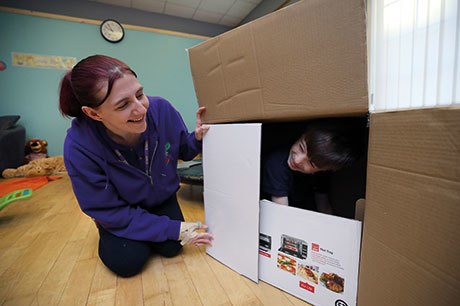
OUR SENSES: EXTERNAL AND INTERNAL
Typically, we tend to think in terms of five senses: sight, hearing, smell, taste and touch.
These are the external senses that tune into the information around us. Increasingly, however, child development specialists tend to agree that there are at least three other internal senses that help us filter information through our bodies.
These are very important not only for our basic functions of daily living (and as such we may hardly be aware of them) – they can also affect us very badly when they are not working properly.
Our interoceptive sense tells us what is going on inside our bodies – are we hungry, breathing deeply, etc?
Our proprioceptive sense provides us with internal body maps so we can automatically judge our body position in relation to the world around us.
Our vestibular sense is essentially our sense of balance, but like the other two internal senses is vitally important for our emotional health and well-being as well as our physical functioning.
We will look at each of the senses in greater depth throughout the articles in this series.
MAKING CONNECTIONS
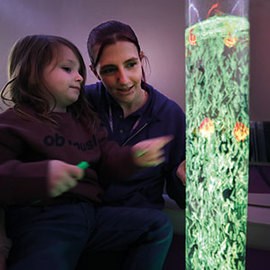 One way of understanding our senses is to think of them as ‘scouts’ bringing ‘news of the world to the brain for analysis, interpretation, reaction and storage as memory’ (Connell and McCarthy 2014).
One way of understanding our senses is to think of them as ‘scouts’ bringing ‘news of the world to the brain for analysis, interpretation, reaction and storage as memory’ (Connell and McCarthy 2014).
We know that making connections is important in the learning process, and this is because it is also at the root of our sensory system. Information from our senses causes electrical activity to connect across the gaps (synapses) between the neurons and axons in our brains.
Each time the same information from our senses is fired in the brain, the connection gets quicker and the neural pathway in the brain gets stronger and faster. Familiar experiences reinforce these connections and what was once new and unfamiliar becomes ‘usual’ and understood.
Imagining the experience
As we begin to understand these new experiences as babies, we are also beginning to recognise more and more information and to make associations with what we already have experienced. This helps us to form judgements about the experience which, in turn, informs how we feel about it and respond (Connell and McCarthy 2014).
Remember your first taste of ice-cream? Probably not if you were a baby at the time, but it was likely to have been a novel experience. Babies are very accustomed to the creaminess and sweetness of milk – but the iciness of that first ice-cream probably came as a sensory surprise.
Once we have experienced the combination of iciness and creaminess a few times we start to make associations with the smell, taste, feel and appearance of it, and these associations can be so strong that we can now begin to imagine what it feels like to eat ice-cream, just on hearing the words.
Repeating or avoiding the experience
Because we can anticipate the experience, we can also now form judgements about whether it is an experience we want to repeat – or avoid. We are beginning to make emotional as well as cognitive connections with a vast array of sensory experiences throughout our daily lives as babies. These, in turn, inform our responses.
Did I like the experience? Did it make me feel good or did it make me feel bad? Did it irritate or soothe me? Did it hurt or did it make me feel better? Did it stimulate me in a good way – or a bad way? Will I seek out this sensation or will I try to avoid it? (O’Connor and Daly 2016, Connell and McCarthy 2014).
Our developing sensory discrimination also becomes very important in our learning. For example, it helps us make comparisons and solve problems as well as manage our strength and make spatial judgments. Am I pushing or pulling too hard? Can I fit into this space? Auditory and visual discrimination in particular is important for comprehension and many of the skills required in academic learning.
Use it or lose it
The more often we have meaningful experiences and can make associations with previous learning, the more likely they are to be stored in our memories and available for retrieval. Babies know this, which is why they seem to be biologically driven to repeat experiences again and again! When those experiences are not repeated then they are likely to be lost.
A baby’s brain is making lots of new connections constantly, but not all of them are being strengthened by repetition. This is useful too, because the brain also needs to prune away some of the billions of neurons a baby is born with, as too much sensory information is just not helpful.
The brain decides what to prune away on the basis of what connections are being made repeatedly. It is our job as caregivers to ensure that what is retained is a rich sensory diet of the good stuff that supports healthy living, good developmental progress and emotional well-being.
SENSORY INTEGRATION
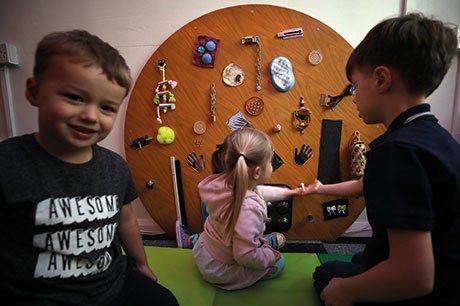
Children using a sensory board
Sensory integration typically develops naturally during childhood, as children play and experience daily activities. The brain develops to process sensory information automatically and efficiently, integrating all the senses so that we can accommodate lots of sensory information simultaneously. But sometimes this doesn’t happen and the brain doesn’t organise sensory information efficiently. This is different from a sensory impairment.
A child who is deaf or has a hearing impairment, for example, may have a problem with the mechanisms of the ear or hearing system which prevent them from hearing properly. A child with an audio processing difficulty may have perfect hearing but struggle to process, modulate or discriminate sound. This can affect not only their ability to tolerate sound but also to process and interpret meaning.
Inefficient organisation of sensory information within the central nervous system can lead to lots of different symptoms and has long been associated with medical conditions such as vertigo and multiple sclerosis. We are starting to see an awareness of how poor sensory processing can affect many aspects of daily functioning.
There is still a lot of debate about whether this is a recognised disorder. But there would seem to be enough evidence to suggest that it is important to be aware of the ways in which children communicate and express their gradual sensory development, as well as difficulties they may have with processing.
Modulating sensory experience
One aspect of healthy sensory development is the ability to modulate arousal to sensory experience – that is, to turn it up so as to be able to pay attention to the information, or to turn it down so that the sensory information does not overwhelm the brain.
The film ‘A Child’s View of Sensory Processing’ (available at www.youtube.com/watch?v=D1G5ssZlVUw) presents a useful way of understanding this process.
Imagine each sense having a cup into which the sensory information is being poured. Some cups might be small and overflow quickly with sensory stimulus. This describes a hypersensitive system – one that is quickly overwhelmed. Others might be huge and never become full, no matter how much information is poured into them. This describes a hyposensitive system – one that can never seem to get enough of the experience.
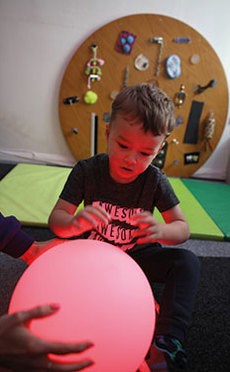 Hypersensitive and hyposensitive systems
Hypersensitive and hyposensitive systems
Children who are hypersensitive and over-responsive to sensory stimulation might:
- dislike strong light
- dislike tactile experiences – for example, messy play
- hate having their hair washed or cut
- be overly sensitive to loud sounds
- be picky eaters – and resist new foods and textures
- dislike tags on their clothes
- hate being tickled or rough-and-tumble play.
- These children will probably avoid some kinds of sensory stimulation and can become easily distressed by them.
- Children who are hyposensitive and under-responsive to sensory stimulation might:
- show no fear and be reckless
- not register normal touch and have a high threshold for pain
- seek lots of movement or touch experiences (for example, fidgeting, rocking, spinning and leaning on people)
- mouth or chew on things
- have poor attention and be easily distracted.
- These children will probably seek out lots of extra stimulation or be unable to judge and moderate their own responses well. Because different senses might have different sized cups, a child might be hypersensitive and avoidant of some kinds of stimulation, while being hyposensitive and constantly seeking out stimulation in other areas.
We can easily recognise these as aspects of development that all children might display at one time or another, and we can all consider ourselves to have a greater sensitivity to some kinds of stimulus more than others. This can lead to challenges that range from the mildly inconvenient to moderately challenging without it seriously affecting our behaviour, relationships and daily functioning.
But when these issues begin to interfere with children’s regular daily life we need to recognise them as possible ‘red flags’ to alert us to look more closely at what might be triggering or underlying the reaction. This is particularly important where a child’s behaviour is causing concern and there are expectations that they could stop the behaviour if only they ‘tried harder’ and made more effort.
As well as alerting us to problems, a greater awareness of how sensory processing develops can help us better understand (and tolerate) some of the behaviours and physical experiences that children need to go through as they seek or avoid sensory stimulation at different developmental stages.
We can think of childhood as one continuous period of ‘sensory training’ when children need to devote themselves to all the sensory stimulation their bodies and brains need for healthy development. All that jumping, spinning, chewing and fidgeting happens for a very good reason!
SENSORY PROCESSING DIFFICULTIES: CAUSES
What causes sensory processing difficulties is still very much a matter of debate; although it has been noted that while sensory processing difficulties can be linked with other conditions (for example, autism, dyspraxia and Fragile X syndrome), they can also exist completely in isolation of any other physical or cognitive issues.
There is some evidence that many children who have experienced early trauma or adverse childhood experiences (ACEs) also display behaviours associated with sensory processing difficulties, and this may be due to experiences before or during birth, as well as too much or too little sensory stimulation in their early years.
It is increasingly recognised that children cared for in, or adopted from, public care systems often present with sensory processing issues. However, it is very important to point out that despite this correlation, it does not mean that every child’s sensory processing issues relate directly back to their early experiences. It is likely that a combination of genetic and environmental factors are involved, and much more research is needed to help us understand the reasons why some children (and adults) struggle with sensory processing.
NB: Clinical assessments of sensory processing problems must be carried out by an appropriately qualified therapist. Always seek advice if you are concerned about a child.
SUPPORTING SENSORY DEVELOPMENT
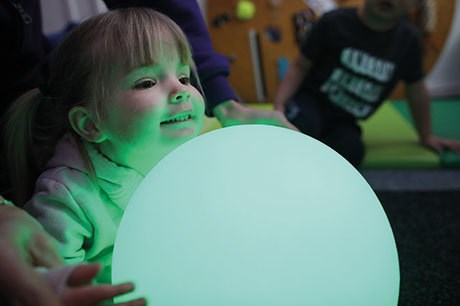
Settings will need to make particular adaptations to their provision and practice if they are to support a child’s specific sensory processing problem (see ‘About this series’). However, nurseries can promote good sensory development more generally and in ways that all children will enjoy by:
Providing a selection of cardboard boxes as these enable children to create their own space, feel enclosed, reduce noise, etc.
- Having something children can bounce on inside and out – for example, a mattress or therapy ball. These provide safe, stimulating vestibular activity for all children.
- Thinking about equipment children can push and roll around on as well as spin – for example, a swivel chair, therapy ball and baby buggy.
- Enabling children to be wrapped up in blankets, stretchy fabric and ‘body socks’ is a valuable proprioceptive experience for relaxing as well as vigorous activity.
- Providing resources that offer imaginative role play uses as well as sensory stimulation – for example, baby buggy, big cardboard boxes, cushions of all sizes, see-through voile scarves and stretchy Lycra. In many cases, multi-purpose resources work very well and are more cost-effective and inclusive than some ‘special needs’ equipment.
About this series
Our five external senses (touch, sight, hearing, smell and taste) and three internal senses (interoceptive, vestibular, and proprioceptive) are constantly sending messages to our brains – a process that we often barely register. Yet this sensory information is vital in helping us understand and make sense of the world.
Typical sensory development occurs naturally in childhood. However, for some children this doesn’t happen, causing sensory processing difficulties that impair development and are manifested in children’s behaviour.
Advice and support
Part one of this series provides an introduction to typical and atypical sensory processing and integration. The rest of the series will look at the senses individually, explaining the causes, symptoms and effects of sensory problems and giving advice on how to adapt provision and practice to address a child’s sensory difficulties.
Series authors
Anne O’Connor is an early years consultant and author, specialising in the Prime areas of development (www.primedforlife.co.uk).
Dr Kath Dickinson is owner of SEND to Learn Nursery in Blyth, Northumberland. She has a doctorate in SEND (autism).
SENSORIMOTOR DEVELOPMENT
Movement and sensory information are intrinsically linked, as postural security and automatic motor planning develop through meaningful physical activity.
As toddlers, we need to look at our bodies and focus hard to carry out intended movements. Through playful and purposeful movement, our proprioceptive and vestibular systems develop so that our movements become automatic and skilful.
Indicators of poor sensorimotor processing might include:
- appearing clumsy
- difficulty with new movements
- poor gross motor skills – for example, when running or riding a bike
- poor fine motor skills – for example, when handwriting
- difficulties dressing and managing buttons
- fidgeting and struggling to sit in one position
- slouching, slumping and leaning – disliking standing and lining up
- poor balance.
Importance of movement
Movement is essential for all healthy sensory processing. As Connell and McCarthy write, ‘Movement and the senses share a special and reciprocal relationship in the learning process’ (Connell and McCarthy 2014).
Our senses motivate movement both within and of the body, and our senses are also stimulated by all kinds of movement.
Children’s play experiences, indoors or out, provide the perfect ‘training ground’ for this reciprocal development, and expensive toys and sensory equipment aren’t essential to the process. A large empty cardboard box can offer as much sensory stimulation and motivation to move in different ways as any piece of fixed playground equipment.
This reciprocal process is essential in what Connell and McCarthy refer to as the ‘move to learn’ cycle. While children are learning how to move, they are activating all their senses and particularly their proprioception and vestibular system. This, in turn, activates their bodies to grow and their brains to develop, which is essential for all other kinds of learning.
REFERENCES AND FURTHER READING
- www.sensoryintegration.org.uk
- The Impact of Sensory Processing Abilities on the Daily Lives of Young Children and Their Families: A Conceptual Model by Winnie Dunn (1997)
- Sensory Integration and the Child by A Jean Ayres
- A Moving Child is a Learning Child by Gill Connell and Cheryl McCarthy
- The Out-of-Sync Child by Carol Stock Kranowitz (and others in this series)
- More references are available online


